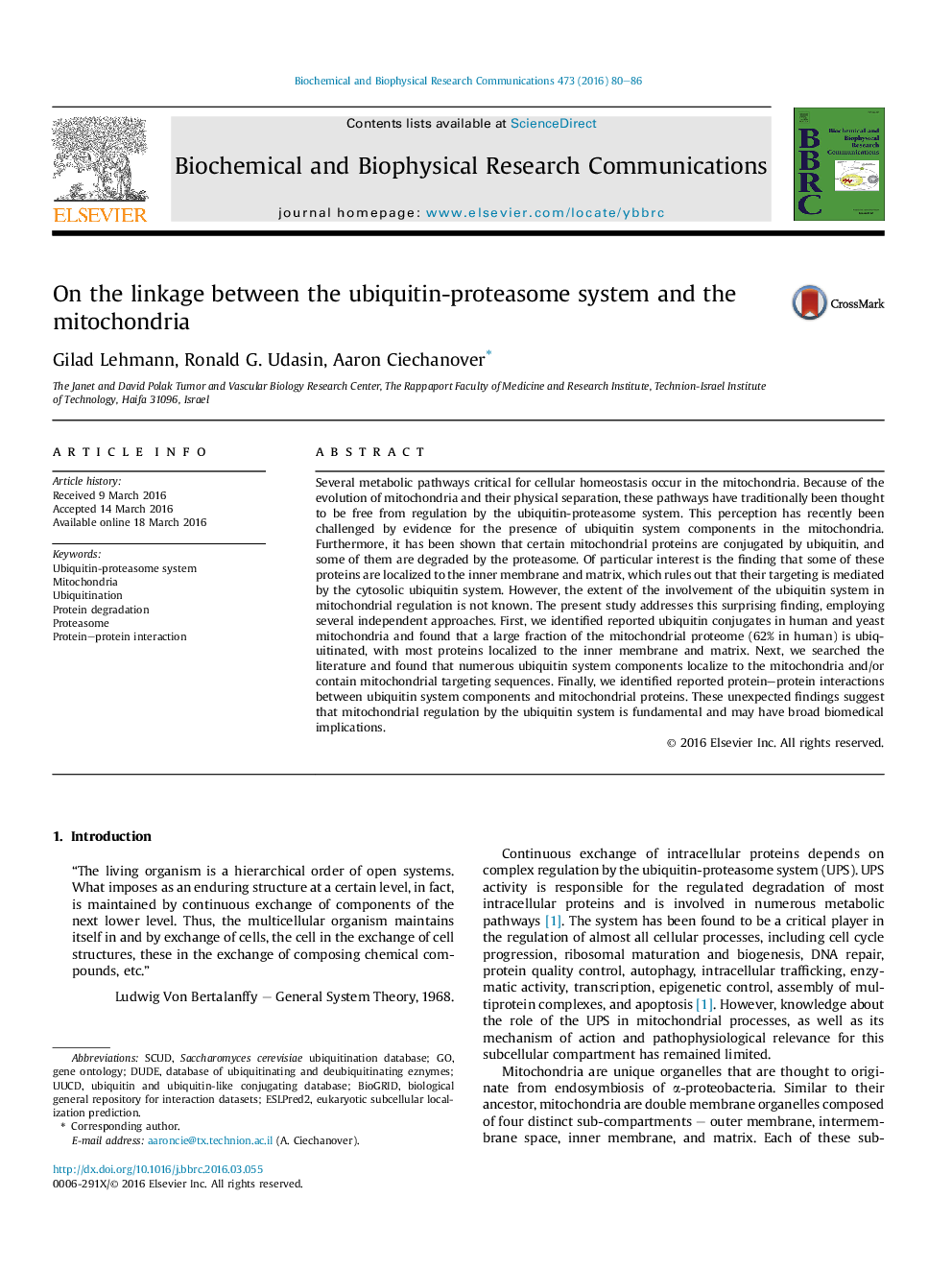| Article ID | Journal | Published Year | Pages | File Type |
|---|---|---|---|---|
| 1927860 | Biochemical and Biophysical Research Communications | 2016 | 7 Pages |
•Many mitochondrial proteins are ubiquitinated.•87 human UPS components are localized to mitochondria.•The entire ubiquitination machinery is localized to mitochondria.•Many UPS components contain mitochondrial targeting sequences.•Many UPS components appear to interact with mitochondrial proteins.
Several metabolic pathways critical for cellular homeostasis occur in the mitochondria. Because of the evolution of mitochondria and their physical separation, these pathways have traditionally been thought to be free from regulation by the ubiquitin-proteasome system. This perception has recently been challenged by evidence for the presence of ubiquitin system components in the mitochondria. Furthermore, it has been shown that certain mitochondrial proteins are conjugated by ubiquitin, and some of them are degraded by the proteasome. Of particular interest is the finding that some of these proteins are localized to the inner membrane and matrix, which rules out that their targeting is mediated by the cytosolic ubiquitin system. However, the extent of the involvement of the ubiquitin system in mitochondrial regulation is not known. The present study addresses this surprising finding, employing several independent approaches. First, we identified reported ubiquitin conjugates in human and yeast mitochondria and found that a large fraction of the mitochondrial proteome (62% in human) is ubiquitinated, with most proteins localized to the inner membrane and matrix. Next, we searched the literature and found that numerous ubiquitin system components localize to the mitochondria and/or contain mitochondrial targeting sequences. Finally, we identified reported protein–protein interactions between ubiquitin system components and mitochondrial proteins. These unexpected findings suggest that mitochondrial regulation by the ubiquitin system is fundamental and may have broad biomedical implications.
